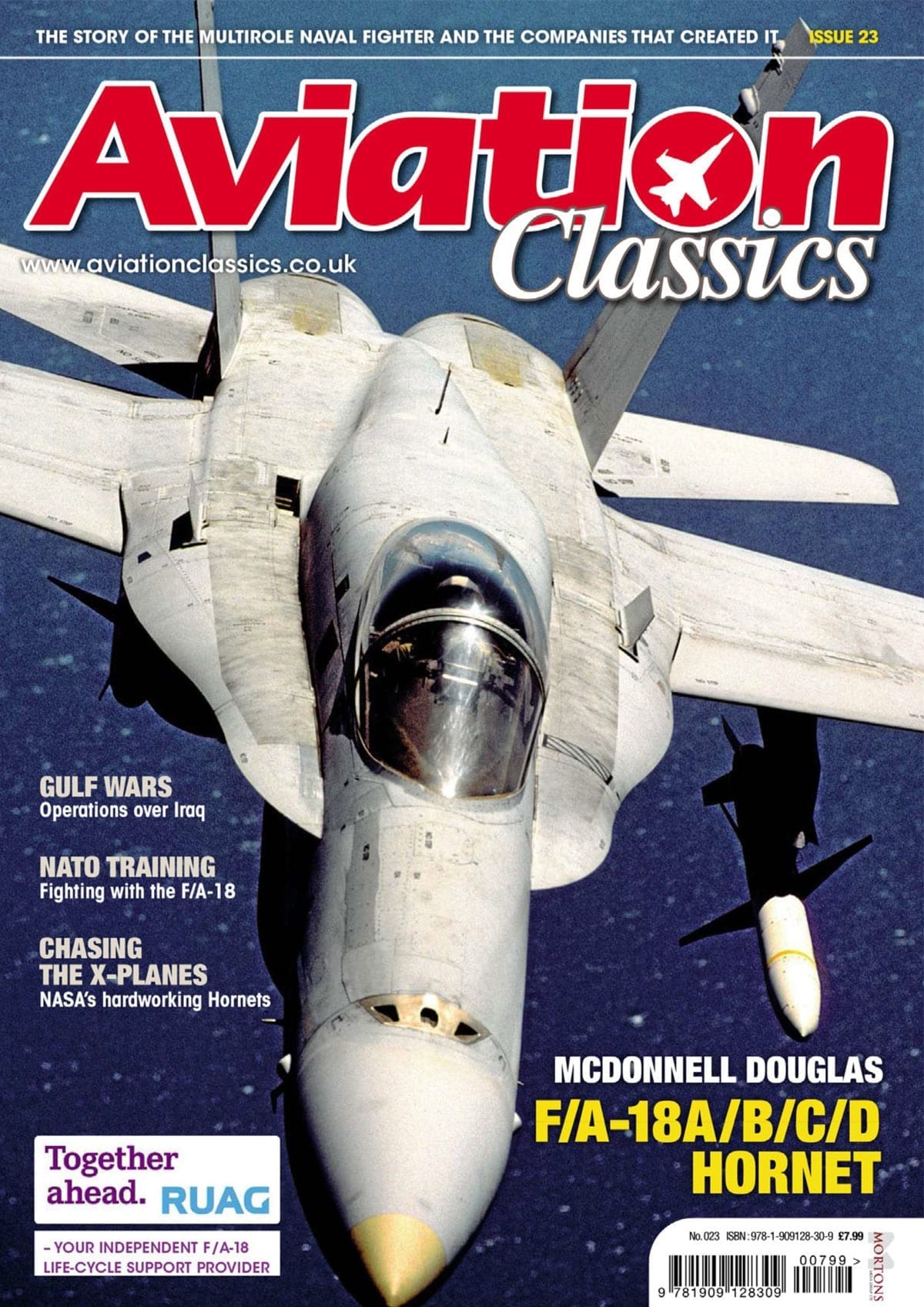Issue 23 of Aviation Classics explores the fascinating development history of the powerful McDonnell Douglas F/A-18A/B/C and D Hornet and details its operational use since its introduction in hitherto unseen detail.
Once again edited by Tim Callaway, who has a broad aviation pedigree, this issue of Aviation Classics will comprise the publication’s now established quality mix of features and photographs. This 132 page glossy A4 perfect bound ‘bookazine’ looks at how:
- The McDonnell Douglas, now Boeing, F/A-18 Hornet began life as a Northrop YF-17. Northrop entered the US Air Force’s Light Weight Fighter (LWF) competition with its YF-17 design, which lost to the General Dynamics F-16 Fighting Falcon.
- The US Navy, looking for a new aircraft under the Naval Fighter-Attack, Experimental (VFAX) programme developed the YF-17 for the harsh environment of carrier-borne service. Northrop agreed a partnership with McDonnell Douglas in 1977 as they had long experience with building this kind of aircraft.
- The much modified naval version of the YF-17 design was to be built in fighter and attack variants as well as a two seat trainer version, known as the F-18A, A-18A and TF-18A respectively.
- US Navy and Marine Corps units receiving their first aircraft, including the famous Blue Angels, the US Navy’s flight demonstration team in 1986. The F/A-18 has flown operations over Iraq, Bosnia, Kosovo and Afghanistan.
- The F/A-18 has been a considerable export success, with aircraft acquired for the air forces of Australia, Finland, Kuwait, Malaysia, Spain and Switzerland. An additional 138 modified aircraft were built for the Royal Canadian Air Force as the CF-18 or CF-188 Hornet.
- In September 1987, the F/A-18C single seat and D two seat versions with improved avionics and weapons capabilities entered production, with 1,100 being built up to 1999. During the Hornets’ service life, a number of upgrades were made, meaning that the original Hornets will remain in service until at least 2025 with some operators.
Author: Tim Callaway










